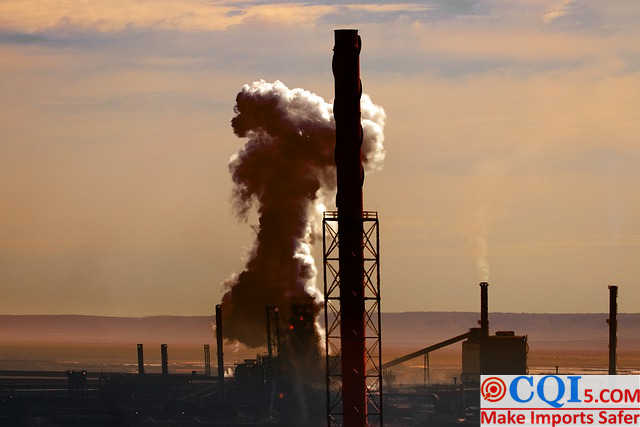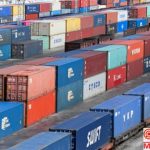The Global Supply Chain Is Unstable, And Where Are Its Solutions
Under globalization, all aspects of product design, raw material supply, intermediate goods production and assembly, and finished goods sales and service are divided globally. The international division of labor is increasingly characterized by vertical specialization. The advantages of division of labor among countries are therefore more manifested in the advantages of a particular link, and countries collaborate with each other in the supply chain and production network, complementing each other and sharing the same fate. However, under the influence of some objective and subjective factors, for a period of time, the normal operation of global production, transportation, exchange and services has been seriously affected, and the GSC crisis has intensified, with “supply cut-off”, “decoupling” “sanctions” “price hikes” and other chaos, so that the fragile global economy to add insult to injury.
The Global Supply Chain Is Unstable Under Covid-19 Impact
The epidemic has hit the global economy with a severe recession and a significant contraction in international trade and investment. Global supply chains are experiencing unprecedented challenges, and in October 2021 the International Monetary Fund reported that the global economy shrank by 3.1% in 2020 from the previous year, the lowest growth level since the Great Depression of the 1930s. In February 2021, data from the United Nations Conference on Trade and Development show that global trade shrinks by 9% and international direct investment shrinks by 42% in 2020. Domestic economic activity and cross-border economic cooperation among countries are severely disrupted.
At the same time, the spread of the epidemic also led to a rapid rise in the number of confirmed cases among industrial workers, which seriously affected the construction, production and business activities of enterprises in various countries. In the production chain, the epidemic led to a decline in the production capacity of key raw materials, which could not meet market needs and triggered a chain reaction of downstream industries cutting off supply; in the storage and transportation chain, the pressure of inspection and quarantine increased, logistics obstacles increased, international shipping capacity was significantly reduced, and transportation was not guaranteed; in the sales chain, the supply and demand of products were not well connected, especially offline retail enterprises, which even faced the double squeeze of insufficient supplies and declining customers In the sales chain, the supply and demand of products are not well connected, especially for offline retailers, who even face the double squeeze of insufficient supplies and declining customers, exacerbating the deformation of the supply chain.
The epidemic has caused sudden disruptions in global supply and demand, resulting in both supply shortages and weaker demand, and has profoundly exposed the vulnerability of economic globalization. At present, the established pattern of economic globalization has undergone profound changes, and there is a trend of regionalization and localization of logistics chain, supply chain and industrial chain. Although the epidemic has not fundamentally changed the process of economic globalization, it has pushed the world economy to shift toward a limited globalization.
At present, the global epidemic situation has stabilized, and the global economy has sailed into a difficult recovery path. However, at this time, the global supply chain crisis has further intensified. In the United States, the supply chain crisis has led to stores and supermarkets are out of stock, especially all kinds of office supplies, children and holiday supplies and other consumables are seriously out of stock. Prices have risen sharply. Data from the U.S. Department of Labor show that the U.S. Consumer Price Index increased 6.2% year-over-year in October 2021, the highest level since 1990, topping 6% for the first time. This suggests that the long-term impact of the epidemic on global supply chains is becoming increasingly evident, and that the trend toward localization, regionalization, and fragmentation of the world economy will deepen further in the foreseeable future.
The global supply chain is unstable under COVID-19 impact.
Policy factors exacerbate the global supply chain crisis
Before the outbreak of the epidemic, major events such as the UK’s exit from the European Union, Trump’s election as US president and the launch of a series of new unilateralism and protectionism policies have profoundly reflected the surge of “anti-globalization” thinking and anti-globalization forces in developed countries led by the US. During the Trump administration, developed economies have increased their attacks on globalization and blamed economic globalization for the relocation of their industries, the decline of old industrial regions and the increase in income inequality, while taking measures to encourage the return of manufacturing industries and multinational companies to invest in the country, and more frequently wielding tariff weapons to set obstacles to the normal investment activities of other countries, which has seriously damaged the original global economic order.
At the same time, the United States and other developed countries see China’s rapid development as a threat to their global leadership and have taken a series of measures to intensify their crackdown on China, worsening the international economic environment. As a major manufacturing country, China occupies a pivotal position in the global supply chain. For example, in the production of tires, China has become the largest exporter.The U.S. continues to suppress China by raising trade barriers, strengthening the embargo on high-tech products and increasing security reviews, but at the same time, it also has a greater negative impact on its own related industries and financial sector.
More importantly, the U.S. crackdown on China has made other countries, including China, fully aware of the risks of excessive external dependence. Some countries that are economically more dependent on the outside world have started to rethink their respective industrial policies in order to reduce their excessive dependence on the outside world. This is likely to further lead to a decline in global economic and trade dependence, and the “de-foreignization” of global supply chains is likely to become a long-term trend. This is also the cause of supply chain instability.
This situation is more obvious in the global technology sector, with the trend of partial decoupling of industrial chains and supply chains among major countries strengthening.
Since 2021, major countries around the world have increased investment in research and development of chips and other high-tech products to promote the localization of chip production. 2021, February, the EU 19 countries announced the “chip strategy” will invest about 50 billion euros to sprint for 2nm chip process, in order to create their own complete semiconductor ecosystem.In mid-May, the United States decided to allocate $52 billion in the next five years to promote semiconductor chip research and production; South Korea announced a 10-year investment of 510 trillion won (about $450 billion) to build a semiconductor powerhouse.In June, Japan’s Ministry of Economy, Trade and Industry announced the establishment of a semiconductor digital industry strategy aimed at expanding domestic production capacity.
We also need to see that the decoupling policies of some developed countries, while increasing barriers to economic interaction, also provide opportunities for China to improve its local industrial chain and supply chain.
In the 1990s, China’s manufacturing industry was characterized by “huge in and huge out” and “two heads out”, with 90% of raw materials and components relying on imports and low value-added trade.
Today, this state of affairs has changed significantly, with about 70-80% of the upstream, midstream and downstream of the industrial chain concentrated in China, and the added value of trade reaching about 40%, with a large number of internationally competitive high-tech enterprises standing out.
However, the overall competitiveness of Chinese enterprises is not strong enough, the advantage of industrial cluster development is not obvious, some key materials, key technologies, key components are still subject to external constraints, which will force enterprises to improve the level of local production, forcing enterprises to increase investment in research and development, so as to make up for the shortcomings in the industrial chain and promote the improvement of China’s supply chain.
As a large country that firmly promotes openness, the improvement of China’s autonomy in the global supply chain will not only give greater play to the role of China’s domestic economic cycle on the domestic and international double cycle, but also make China’s contribution to make up for the shortcomings of the global supply chain.
Strengthening international macroeconomic policy coordination
Whether it is to cope with COVID-19 risks and challenges or to promote global economic recovery, synergistic responses and integrated emergency management among different countries and regions are needed, and international macroeconomic policy coordination needs to be strengthened to maintain a stable and smooth supply chain of the global industrial chain.
First, it is necessary to advocate the adoption of responsible macroeconomic policies by major countries and strengthen international macroeconomic policy coordination. Advocate in the international community that when formulating and adjusting macroeconomic policies, large countries should fully consider the negative spillover effects they cause to other countries, and oppose irresponsible unilateral actions that transfer risks and crises.
At the same time, the role of the G20 and other global governance mechanisms should be given full play to strengthen international macroeconomic policy coordination in the wake of the epidemic, so as to jointly address the various problems and challenges facing the global supply chain and maintain the smooth operation of the global economy.
Second, we should firmly maintain the open trade system and promote the optimal allocation of resources on a global scale. To ensure the security of the world market and the stable growth of the global economy, countries around the world should strengthen collaboration and jointly oppose trade protectionism.
In the short term, for some developing countries with weak economic bases, it is necessary to effectively safeguard their legitimate rights and interests, fully enjoy the special and differential treatment granted by the World Trade Organization, and continuously enhance their interest and motivation to participate in economic cooperation.
In the long run, only two-way openness and fair sharing of market and investment opportunities can make international cooperation more sustainable. At present, many countries have a strong desire for development and cooperation, and it is important to jointly explore effective ways to promote the orderly and free flow of global factors and deep market integration, so that cooperation among countries can be long-term and of strategic importance, and eventually reach a close relationship that ensures interdependence.
Finally, we should actively promote the reform and construction of the global economic governance system. At the global level, actively promote the reform of traditional global governance mechanisms such as the WTO, the IMF and the World Bank, promote the development of new global governance mechanisms such as the G20, and promote the establishment of new international rules to maintain the stability of global supply chains.
At the regional level, actively provide differentiated regional public goods that meet the needs of members in the region and differ from global mechanisms. At the cross-regional level, actively promote cooperation among different regions and different types of countries, and promote the establishment of a new type of cooperation mechanism that maintains the realization of supply chain complementarity and the maintenance of supply chain stability.
CQI5 is committed to providing importers worldwide with product quality inspection services that far exceed those of our peers. If you are planning to import or have imported from China or Southeast Asian countries, please contact us cs’@’cqipro.com to learn more about how we can make your imports safer.
Disclaimer:
CQI5 article information from the Internet and contributions, the copyright of which belongs to the original author, and only represents the views of the original author. This website is only responsible for sorting out, typesetting and editing the articles, reproduced for the purpose of spreading more information, does not imply that it endorses its views or proves the truthfulness, completeness and accuracy of its content, and therefore does not assume any legal responsibility.
The information contained in this article is for reference only and is not intended as direct advice for decision-making.
If we inadvertently violate your copyright, please inform us, after verification, we will immediately correct or delete the content according to the requirements of the copyright holder, thank you! Contact, email: copyright@cqipro.com
This website has the final right to interpret this statement.
Welcome to reprint, please be sure to keep information complete.






